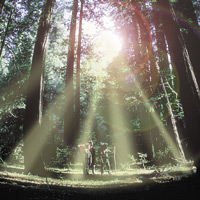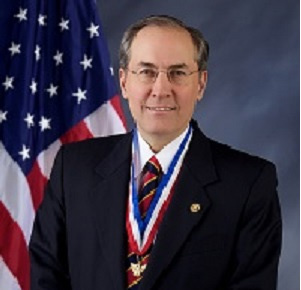The Leave No Trace principles might seem unimportant until you consider the combined effects of millions of outdoor visitors. One poorly located campsite or campfire may have little significance, but thousands of such instances seriously degrade the outdoor experience for all. Leaving no trace is everyone’s responsibility.

Leave No Trace Awareness
Instilling values in young people and preparing them to make moral and ethical choices throughout their lifetime is the mission of Scouting America. Leave No Trace helps reinforce that mission, and reminds us to respect the rights of other users of the outdoors as well as future generations. Appreciation for our natural environment and a knowledge of the interrelationships of nature bolster our respect and reverence toward the environment and nature.
Leave No Trace is an awareness and an attitude rather than a set of rules. It applies in your backyard or local park as much as in the backcountry. We should all practice Leave No Trace in our thinking and actions–wherever we go.
We learn Leave No Trace by sharing the principles and then discovering how they can be applied. Leave No Trace instills an awareness that spurs questions like “What can we do to reduce our impact on the environment and on the experiences of other visitors?” Use your judgment and experience to tailor camping and hiking practices to the environment where the outing will occur. Forest, mountain, seashore, plains, freshwater, and wetland environments all require different minimum impact practices.
Outdoor Ethics
Help protect the backcountry by remembering that while you are there, you are a visitor. When you visit a friend, you take care to leave your friend’s home just as you found it. You would never think of trampling garden flowers, chopping down trees in the yard, putting soap in the drinking water, or marking your name on the living room wall. When you visit the backcountry, the same courtesies apply. Leave everything just as you found it.
Hiking and camping without a trace are signs of an expert outdoorsman, and of a Scout or Scouter who cares for the environment. Travel lightly on the land.
Leave No Trace in Scouting’s Outdoor Program
Scouting America is committed to implementing Leave No Trace at all levels of the program. Scouting America, Venturing, and Sea Scouting programs use the standard Leave No Trace Seven Principles, which are also explained below. The Cub Scout program uses the Leave No Trace Kids Principles – a simplified version of the standard Leave No Trace Seven Principles. See the Cub Scout program literature for more information on the Kids Principles.
Leave No Trace Awards and Training
Scouts and adults wishing to go beyond the Leave No Trace skills and ethics included in the core programs can earn the Scouting America Outdoor Ethics Awareness and Action Awards, and can start on the comprehensive Leave No Trace training continuum:
- Scouting America Leave No Trace Basics (formerly 101) is a general introduction to Leave No Trace ethics and skills, and how to apply them in the general Scouting America outdoor program.
- Scouting America Leave No Trace Level 1 Instructor (formerly Trainer) Course provides broader and more in-depth training in Leave No Trace skills and ethics. Participants also learn and practice fun and effective teaching methods, and are authorized to teach the Scouting America Leave No Trace Basics class.
- Scouting America Leave No Trace Level 2 Instructor (formerly Master Educator) Course goal is to graduate effective and active Leave No Trace Level 2 Instructors who will serve as knowledgeable outdoor ethics resources in their councils, conducting the Leave No Trace Level 1 Instructor courses needed to support their unit, district and council outdoor programs.
To learn more about these training opportunities, please see Scouting America Outdoor Ethics Training.
The Leave No Trace Seven Principles
1. Plan Ahead and Prepare
Proper trip planning and preparation helps hikers and campers accomplish trip goals safely and enjoyably while minimizing damage to natural and cultural resources. Campers who plan ahead can avoid unexpected situations, and minimize their impact by complying with area regulations such as observing limitations on group size. Schedule your trek to avoid times of high use. Obtain permits or permission to use the area for your trek.
Proper planning ensures
- Low-risk adventures because campers obtained information concerning geography and weather and prepared accordingly
- Properly located campsites because campers allotted enough time to reach their destination
- Appropriate campfires and minimal trash because of careful meal planning and food repackaging and proper equipment
- Comfortable and fun camping and hiking experiences because the outing matches the skill level of the participants
2. Travel and Camp on Durable Surfaces
Damage to land occurs when visitors trample vegetation or communities of organisms beyond recovery. The resulting barren areas develop into undesirable trails, campsites, and soil erosion.
Concentrate Activity, or Spread Out?
- In high-use areas, campers should concentrate their activities where vegetation is already absent. Minimize resource damage by using existing trails and selecting designated or existing campsites. Keep campsites small by arranging tents in close proximity.
- In more remote, less-traveled areas, campers should generally spread out. When hiking, take different paths to avoid creating new trails that cause erosion. When camping, disperse tents and cooking activities–and move camp daily to avoid creating permanent-looking campsites. Avoid places where impacts are just beginning to show. Always choose the most durable surfaces available: rock, gravel, sand, compacted soil, dry grasses, or snow.
These guidelines apply to most alpine settings and may be different for other areas, such as deserts. Learn the Leave No Trace techniques for your crew’s specific activity or destination. Check with land managers to be sure of the proper technique.
3. Dispose of Waste Properly
Pack It In, Pack It Out – This simple yet effective saying motivates back-country visitors to take their trash home with them. It makes sense to carry out of the backcountry the extra materials taken there by your group or others. Inspect your campsite for trash or spilled foods. Accept the challenge of packing out all trash, leftover food, and litter.
Sanitation
Backcountry users create body waste and wastewater that require proper disposal.
Wastewater. Help prevent contamination of natural water sources: After straining food particles, properly dispose of dishwater by dispersing at least 200 feet (about 80 to 100 strides for a youth) from springs, streams, and lakes. Use biodegradable soap 200 feet or more from any water source.
Human Waste. Proper human waste disposal helps prevent the spread of disease and exposure to others. Catholes 6 to 8 inches deep in humus and 200 feet from water, trails, and campsites are often the easiest and most practical way to dispose of feces.
4. Leave What You Find
Allow others a sense of discovery, and preserve the past. Leave rocks, plants, animals, archaeological artifacts, and other objects as you find them. Examine but do not touch cultural or historical structures and artifacts. It may be illegal to remove artifacts.
Minimize Site Alterations
Do not dig tent trenches. Only build lean-tos, tables and chairs with materials you’ve carried or packed with you. Never hammer nails into trees, hack at trees with hatchets or saws, or damage bark and roots by tying horses to trees for extended periods. Replace surface rocks or twigs that you cleared from the campsite. On high-impact sites, clean the area and dismantle inappropriate user-built facilities such as multiple fire rings and log seats or tables.
Good campsites are found, not made. Avoid altering a site, digging trenches, or building structures.
5. Minimize Campfire Impacts
Some people would not think of camping without a campfire. Yet the naturalness of many areas has been degraded by overuse of fires and increasing demand for firewood.
Lightweight camp stoves make low-impact camping possible by encouraging a shift away from fires. Stoves are fast, eliminate the need for firewood, and make cleanup after meals easier. After dinner, enjoy a candle lantern instead of a fire.
If you build a fire, the most important consideration is the potential for resource damage. Whenever possible, use an existing campfire ring in a well-placed campsite. Choose not to have a fire in areas where wood is scarce–at higher elevations, in heavily used areas with a limited wood supply, or in desert settings.
True Leave No Trace fires are small. Use dead and downed wood that can be broken easily by hand. When possible, burn all wood to ash and remove all unburned trash and food from the fire ring. If a site has two or more fire rings, you may dismantle all but one and scatter the materials in the surrounding area. Be certain all wood and campfire debris is dead out.
6. Respect Wildlife
Quick movements and loud noises are stressful to animals. Considerate campers practice these safety methods:
- Observe wildlife from afar to avoid disturbing them.
- Give animals a wide berth, especially during breeding, nesting, and birthing seasons.
- Store food securely and keep garbage and food scraps away from animals so they will not acquire bad habits. Never feed wildlife. Help keep wildlife wild.
You are too close if an animal alters its normal activities.
7. Be Considerate of Other Visitors
Thoughtful campers respect other visitors and protect the quality of their experience.
- Travel and camp in small groups (no more than the group size prescribed by land managers).
- Let nature’s sounds prevail. Keep the noise down and leave radios, tape players, and pets at home.
- Select campsites away from other groups to help preserve their solitude.
- Always travel and camp quietly to avoid disturbing other visitors.
- Make sure the colors of clothing and gear blend with the environment.
- Respect private property and leave gates (open or closed) as found.
Be considerate of other campers and respect their privacy.
Learn More About Leave No Trace
For general Leave No Trace information, teaching resources, books, posters, plastic cards listing the Leave No Trace Seven Principles, or information on becoming a Leave No Trace member, visit the Leave No Trace website LNT.org.
For more information on how Leave No Trace is used across scouting’s outdoor programs, please see the Cub Scout program literature, Scouting America Handbook, the Fieldbook, and our Outdoor Ethics webpages.
Teaching Leave No Trace is an excellent resource for teaching the Leave No Trace Seven Principles in Scouting.




